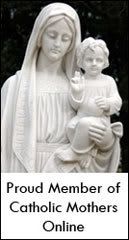In the midst of everything else, we've been squeaking in a unit on Ancient Egypt -- the culture, history, mythology, etc of this longest-lived empire (some 3000 years!). Here are some of the resources we've used so far ...
VIDEOS/DVDs:
Ancient Civilizations for Children: Ancient Egypt (from Schlessinger Media) – part of a series with “Arizona Smith” and his investigators in training; covers all aspects of this ancient culture.
Ancient Egyptian and Greek Art – Treasures of Tutankhamun, Egyptian Tombs and Temples, Greek Art and Architecture. This dvd can be borrowed free from the NGA, number DV333.
Egypt: Beyond the Pyramids (from The History Channel) – volume 1 is about the temples of the ancients (how, why and where), volume 2 is about the Great Pharaoh Rameses II and his lost children (and their possible final resting place), volume 3 discusses the daily life of the ancients and volume 4 gives a wonderful overview of death and the journey to immortality from the earliest to the mummification process up to 5 B.C.
The Fall of Great Empires: The Egyptian Empire (from Schlessinger Media) – excellent video about the 3000+ years of the Egyptian empire and how/why it collapsed to Rome.
Hands-on Crafts for Kids: Ancient Egypt: 3000 bc – 300 bc (from Chip Taylor Communications) – thirty-minute show describing six different crafts that kids can make to help with their understanding of Ancient Egypt.
Mysteries of Egypt (from Kultur Videos) – WONDERFUL overview of many of the mysteries from ancient Egypt. Caution, there is a long (about 5 minutes) belly-dancing sequence (why????); otherwise, this video is a great overview!
Pyramid (from PBS Home Video) – narrated by author David Macaulay, this is a great live action video that shows today’s views of Egypt and current understanding of how pyramids are built (led by David Macaulay) while the animated portions bring to life Macaulay’s book, Pyramid.
Secrets of Lost Empires: Pharaoh’s Obelisk (from NOVA) – reconstruction of how the Ancient Egyptians were able to move the 400+ton- one-hundred-feet high obelisks into place.
Tutankhamun (from Diamond Entertainment) – a wonderful 30 minute video showing many of the treasures unearthed by Carter. The narrator does a wonderful job of explaining what and why these things were placed in the young pharaoh’s tomb.
BOOKS:
You Wouldn’t Want to be an Egyptian Mummy: Disgusting Things You’d Rather Not Know By David Stewart – wonderfully fun for kids (especially boys) to explain how and why the Egyptians embalmed their dead. Really great information (if a bit gross) for all ages.
You Wouldn’t Want to be a Pyramid Builder: A Hazardous Job You’d Rather Not Have by Jacqueline Morley – great information about everyday life in Ancient Egypt and the work that went into building pyramids (as well as everyday living in this ancient, agrarian culture).
Egyptology by Emily Sands – a “journal” of archaeologist Emily Sands with lots of cool things for the kids to look at, touch and read. This is one of those scrapbook-style books that pack a lot of information into a small space.
The Egyptology Handbook by Emily Sands – is a sequel or companion to Egyptology. This one is written for Ms. Sands’ niece and nephew and is 30 lessons exploring the history and culture of Ancient Egypt. This would make a great "spine" for the overal unit study.
The Shipwrecked Sailor: An Egyptian Tale with Hieroglyphs by Tamara Bower – is based on a real sotry deciped from an early hieroglyph. This picture book incorporates hieroglyphs and Egyptian symbols to really make the story come alive. This is a wonderful introduction to hieroglyphics with lots of interesting information woven throughout the story. The notes at the end are a wealth of information also.
moving again ...
14 years ago




 ...
... 



1 comment:
Wow, you are busy - lots of little rabbit trails..
Post a Comment